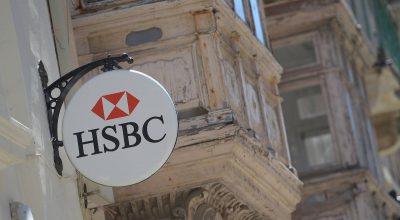Land reclamation – Muscat’s next frontier
After going up through a relaxation of building heights in 2005, expanding on land through the rationalization of 2006, will Malta be expanding seawards under Joseph Muscat, JAMES DEBONO asks?

Among the ideas Joseph Muscat floated in his post budget speech is a yacht marina and cruise terminal in Gozo and a land reclamation project in a yet to be identified spot on the Maltese coastline.
In the past 25 years, governments have relied on the construction industry to kick-start the economy by expanding development zones and relaxing building heights. The new government seems to have its sights fixed straight towards the sea.
Aware that further development in the countryside is bound to create widespread popular opposition, Muscat's idea of kick-starting the economy hinges on seaward expansion, something which could endanger fragile marine ecosystems but which is less likely to stir public resentment, due to the fact that only divers and marine biologists are familiar with the marine environment.
What is Posidonia oceanica? | The procedural problem | The cost of land reclamation | Economic benefits | How reclamation works | Environmental constraints
Speaking to environmentalists in August 2012, Muscat argued that land reclamation could ease the pressure from construction proposals outside development zones.
"The important thing is not to create so many thousands of square meters and then figure out later what to do with them, but rather to have a master plan beforehand."
Pressed to give examples of such viable projects, Muscat said that there is a great demand for yacht marinas in the Mediterranean, and following the permit refusal for a yacht marina in Hondoq ir-Rummien, "land reclamation offers the opportunity to construct yacht marinas which will create jobs and wealth".
Still, it remains doubtful whether the massive capital investment required for such a project would be possible in the absence of a real estate component, through which private investors could recoup capital costs estimated to range from €40 to €400 milion.
The PL's manifesto commits the party to land reclamation and adds that it has to be carried out in full respect of environmental and planning standards.
The government has so far insisted that it would not identify a land reclamation site and would leave it up to the private sector to come up with ideas.
Muscat's mention of a cruise liner terminal and a marina in Gozo indicates that one such project could take place at Mgarr: a crammed port which would surely not be able to support the 500-berth marina he proposed during the electoral campaign.
Yet such a project would inevitably clash with environmental considerations, given that the Malta Environment and Planning Authority's Environment Protection Directorate has already shot down the idea of a cruise terminal at Mgarr due to the risk posed to the EU-protected Posidonia meadows, which pose an obstacle to land reclamation projects on the most attractive coastal areas in Malta, for example, Qalet Marku and Bahar ic-Caghaq.
This seagrass species, often called 'Neptune grass', which poses the greatest legal obstacle to seaward expansion, is endemic to the Mediterranean Sea and known as the lung of the Mediterranean. The seagrass forms large underwater meadows that are an important part of the ecosystem. This species is found only in the Mediterranean Sea, where it is in decline, occupying an area of only about 3% of the basin. Posidonia grows best in clean waters, and its presence is a marker of a lack of pollution. Seagrasses are responsible for 12% of the carbon stored in ocean sediments and play a significant role in the regulation of the global carbon cycle. In daylight, Posidonia oceanica meadows oxygenate coastal waters.
Posidenia meadows are a priority natural habitat under the EU Habitat Directive.
MEPA can only approve a project which is clearly in breach of EU directives in the event that it must be completed for reasons of overriding public interest. But if this is the case, Malta will have to inform the European Commission and compensate for the loss of habitat.
The government has made it very clear that unlike Lawrence Gonzi, who proposed a golf course at Xaghra l-Hamra in 2005 and commenced studies to identify a site for an artificial island, the new government will leave it up to the private sector to come up with a site.
This raises a number of questions: will the government set parameters, such as restricting development to sites that will create the fewest environmental consequences, or will the private sector propose sites wherever it likes, thus making any development dependent upon the grant of a planning permit?
In view of the fact that, out of 11 sites considered in the 2005 study, only two were eligible due to the absence of EU-protected Posidonia meadows, would the government exclude any site with Posidonia meadows before a call for expression of interest was issued?
The European Strategic Environmental Assessment Directive also requires governments to conduct an impact assessment not just on projects but also on plans which could have an environmental impact. This suggests that the government cannot avoid conducting preliminary impact studies before opening the call for expressions of interest.
Another danger is that the bidder will be chosen before the project is even approved by MEPA. Would the pre-selection of a bidder not render the environmental impact studies - conducted after the project selection - a mere formality?
Another question is whether the government intends to impose any timeframe for MEPA to approve or refuse such a project.
One major question is whether the government intends to exclude real estate development on land reclaimed from the sea. If it does not do so before issuing the call for expressions of interest, the risk is that developers will be tempted to take the easy way out and propose another town on the sea.
In view of Malta's 50,000 vacant properties, the risk is that the property surplus will continue to increase, as would the dependency on the construction industry. This could have a negative long-term impact on the economy. Only this week, the European Commission recommended close monitoring of developments in the property market, in view of its exposure to the financial sector. Countries like Spain have faced financial collapse for their reliance on the construction industry which ultimately endangered their financial stability.
But a study authored by leading British consultant Scott Wilson states clearly that land reclamation could only be feasible if it is subsequently developed along lines similar to the proposals for Smart City. "Smart City has been evaluated as producing net annual benefits to the economy of up to €800 per square metre. There remains a question mark over whether there is sufficient demand for this scale of development."
A study commissioned by MEPA in 2007, which cost the country nearly half a million euros, concluded that land reclamation projects are too costly.
The accompanying report, assigned to Maltese consultants ADI and leading British consultant Scott Wilson, assessed the economic and environmental feasibility of land reclamation in 11 different forms along two areas on the Maltese coastline identified in a previous study by Danish experts Carl Bros.
The two areas were the coastline between Pembroke and Qawra and the coastline between Marsaskala and Ricasoli.
The study was conducted after Lawrence Gonzi declared the government's intention to embark on a project to create an artificial island on the coastline on the same day he announced the Xaghra l-Hamra golf course in 2005.
In view of the high costs involved, the report concludes: "It would appear prudent to... consider other measures to reduce the size of the waste stream, before embarking on such as high-cost project."
The study excludes the creation of artificial islands, which are deemed too expensive, but identified two possible sites where the coastline can be extended: on the northern part of the coastline between Marsaskala and Ricasoli and near the present Smart City development.
Land reclamation on the stretch of coastline at Bahar ic-Caghaq was completely excluded for ecological reasons, even if it emerged that this area would be the most economically viable for reclamation.
On the assumption that land obtained through reclamation would be available for economic development, the study confirmed the "potential for strong net economic benefits to be reaped". This is due to relatively high land values in Malta, as well as the potential to undertake high value-added investment projects in the economy.
However, the report points out the risks associated with demand for new properties, which would be even greater if Malta opted for a large-scale land reclamation project.
Such risks could also be more relevant in the case of undertaking several land reclamation options simultaneously.
Paradoxically, it was the extension to the coastline in Area 1 (the Bahar ic-Caqghaq coast), excluded for ecological reasons, which yielded the best relative economic performance.
In terms of impact on the economy of Malta, a land reclamation project would generate benefits of between €616 million and €3,180 million and produce a rate of return of 10-40%. The highest returns would be achieved by reclamations in shallower waters, typically those in Area 1 (the Bahar ic-Caghaq coast).
The most cost-effective options, according to the study, would be an infill formed by constructing edge protection across the mouth of the inlet at Qalet Marku.
It is also doubtful whether Malta generates enough construction debris in the short term. Malta currently generates 1.3 million tons of construction debris annually, while anything between five and 20 million tons of debris would be needed for a feasible land reclamation project. Perversely, land reclamation projects may create even more demand for construction waste, thus undermining any attempt at its proper management.
Land reclamation using waste material is technically feasible, providing it is bunded and contained. Without containment, waste material is subject to rapid erosion and dispersion across large areas, which is environmentally acceptable. Bunding would take the form of a breakwater, constructed by one of a number of methods, including a rubble mound, concrete caissons or steel caissons.
Technical difficulties of bund construction effectively restrict the feasible area for reclamation to areas of the seabed shallower than 20 metres (i.e., areas within the minus -20m contour). The study also states that there is very little experience of land reclamation and construction of breakwaters, and costs and risks increase rapidly.
Costs were established for each of the 11 reclamation forms using a combination of Maltese experience and that from marine projects worldwide. The cost of creating the reclamations was assessed as ranging from €42 million to €546 million.
The major environmental and legal stumbling block for land reclamation is the presence of protected seagrass habitats over much of the seabed within the areas shallower than 20m. This habitat is protected under EU law, and only a development of national importance would justify construction in this area.
"It is concluded that land reclamation for the purpose of accommodating inert waste and creating land for development is not of sufficient national importance for the project to go ahead," the study concluded.
For this reason only the areas without seagrass beds should be considered further for land reclamation. This limits land reclamation to the northern part of Area 3, which includes the coastline between Xghajra and Marsaskala.
The majority of the proposed reclaimed areas on the Bahar ic-Caghaq (Area 1) coast coincide with Posidonia oceanica communities. Area 1 has high archaeological potential. Archaeological objects recovered from Area 1 include Roman shards, two Roman anchors, a Roman corn grinder, a ballast heap, and amphora necks from the late Roman or early Byzantine periods.
The majority of the proposed reclamation areas on the Ricasoli to Marsaskala coast coincide with algal communities. Only two sites do not host Posidonia oceanica communities. The archaeological potential of Area 3 is also high. The main archaeological objects discovered on the seabed of Area 3 or within its vicinity consist of a series of modern wrecks dating to World War II.



.png)


.jpg)








.jpeg)




.png)

